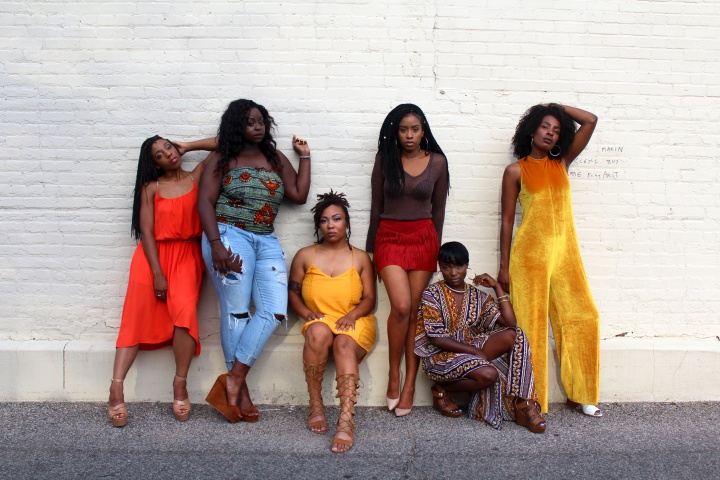
I remember casually scrolling through an endless amount of eye-roll-worthy pictures captioned ‘#couplegoals’ and ‘#ootd’ when my screen lit up with a photo of a close Indian friend from high school in all her fierce glory – crop top and blood red lips included. Her confident aura radiated off a sleek white background and the semi-expected diamond emoji caption made me smirk with familiarity. The only twist? Her literally twisted hair. With the many life-changing events rapidly occurring mainly due to unqualified ‘leaders’ in our troubled society, one would think the topic of hair was the furthest thing from politics. It’s just keratin, right? It holds no nerves, and no life in the eyes of many. Well, to an immense number of people, hair is their crowning glory. It is a reflection of religion, culture or personal style, and sometimes all three at once. It took an Indian woman wearing dreads to spark a conversation in my little community back home, but how much further does this side of hair politics among the races go? Some may not like it, but here are the “dreadful” truths about hair.
Truth #1 – dreads don’t belong to just one culture. Many people believe that in today’s world, sensitivity and liberalism are at an all-time high – and they’re not entirely wrong. Even though the two may not share a strong correlation, people are quick to cry “discrimination” and “culture appropriation” under the guise of being liberal and acting in accordance to what that entails – equality and justice. But this can come across as being too sensitive and sometimes downright ignorant, as it does in this case of hair politics. Dreads are traditionally known as being part of African culture, and many Black people wear this style with deserved pride. However, others can and should be allowed to enjoy flaunting this style without being bashed for it. Buddhists in medieval South Asia used the hairstyle as a way to let go of material vanity; Rastafarians, inspired by Nazarites in the Bible, wore dreadlocks and then later popularised the style with the mainstreaming of Reggae music; and, lo and behold, the first literary mention of dreads is said to be in the Hindu Vedic scriptures dating from around 1700 BC. Take a moment to absorb just how long ago that was. And yes, dreads may be just one style of many but they fall comfortably into the ‘natural hair’ category, which brings us to point number two in Hair 101.
Truth #2 – race plays a huge factor in hair. Last year, protests at the prestigious Pretoria High School for Girls (PHSG) went viral, making international news and putting South Africa at the forefront of many minds in an extremely unfortunate way. According to former PHSG scholar Khanyisile Hlalethoa, staff members had taken to telling black students to “fix” their hair. What “fixing” meant, exactly, would differ depending on who was saying it. Due to most of the authoritative figures at the institution being white, many black students didn’t interpret their orders in the best light. The message that natural hair would not be accepted because it was “untidy” was too ridiculous to cover up the racial bias being displayed.
“Everyone, after the protest, would go on about hair but it was so much bigger than that. That was not what we were fighting for. Racism is real and we were being subjected to it through the rules against our natural hair,” said Hlalethoa.
As the hashtag #StopRacismAtPretoriaGirlsHigh circulated through social media, reports of another girl in Port Elizabeth claiming she was warned she would not be able to sit for her exams due to her afro were brought to light. It’s no secret that hair differs between races in factors such as texture, colour, and length; and, in the same breath, it’s no secret that the majority of media outlets portray straight, flat hair as the most desired type, mainly because most white women naturally have this type of hair. It’s this deviation from what is considered ‘normal’ that may seem threatening to some, especially, considering the history of South Africa, powerful white people with old-fashioned views who may see the self-love of natural, black hair as brimming loathing of anything that looks different.
Which brings us to Truth #3. To the people who trivialise things that aren’t important to themselves – hair is political. Let go of the question, “What’s hair got to do with anything?” or the silly notion that “hair is just hair”. The idea that tightly coiled curls are political may be an uncomfortable truth, but black women walking into meetings, posing for pictures on Snapchat (of course, with the doggy filter) or thinking of new ways to wear and protect their afro or dreads while out and about, are telling everyone that they are no longer submitting to society’s beauty norms and values. Hair shouldn’t be a symbol of cultural assimilation. By ditching the hair chemicals, one can argue that they are taking back control of their bodies and sticking two middle fingers up at everything society projects about a woman’s beauty and worth.
At the end of the day, your hair should be what you want it to be. Natural or not, curly or straight, long or short – diversity and self-love is what makes people around the globe appreciate one another’s cultures rather than appropriate them. The glow you have when loving every aspect of yourself, including your crown of hair, cannot and should not be beaten down by even the strictest of rules.